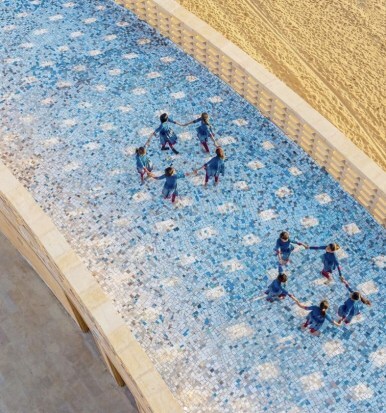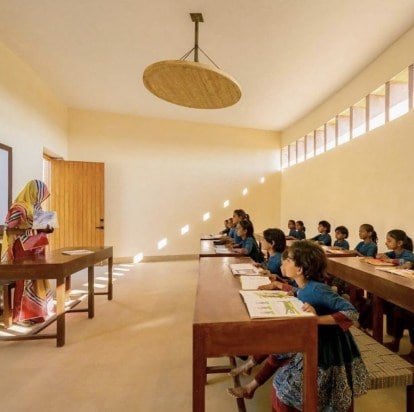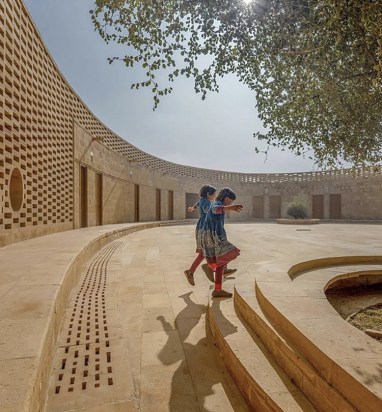Standing in the middle of the Thar desert, this magnificent oval-shaped school building has gathered a lot of attention for its modern design which in its own unique way promotes sustainability and innovation. The Rajkumari Ratnavati Girls’ School in Jaisalmer has been designed by American architect Diana Kellogg. What’s surprising about this school is the fact that it remains cool even in the scorching 50 degrees Celsius.
What inspired the oval-shaped design?
Diana had expressed that she originally thought of the building as an oval, an egg, a womb, but as the project progressed, she began to think of it as a seed. “A seed, that extends like ripples of water through the communal oceans, without end…as I have watched the building grow. I have seen these connections extending my hope for infinity,” Kellog wrote alongside a video of the school on her Instagram page.
The cooling factor: Magnificent hand-carved sandstone
The structure in the heart of the Thar desert, comprising ten classrooms, stands as a remarkable testament to human craftsmanship, as it has been meticulously constructed using intricately hand-carved sandstone blocks. This transformative endeavor, undertaken under the guidance of CITTA, has paved the way for numerous girls hailing from the rural expanse around Jaisalmer to embrace formal education, marking a significant milestone.

The construction of the edifice was a labor of love led by local artisans, some of whom are fathers to the very girls benefitting from the school. Adding depth to the architectural narrative, the building’s foundation rests upon locally-sourced materials, a conscious choice that champions sustainability and contributes to the reduction of carbon emissions. Notably, the rooftop is adorned with a solar panel canopy, ingeniously doubling as a cooling mechanism in an environment where temperatures surge to nearly 120 degrees.

Additional conventional methods utilized during the construction process of this infrastructure included the application of lime plaster to the interior walls. This porous and organic cooling substance proves instrumental in dissipating any retained moisture arising from humid conditions. Furthermore, a jali wall, characterized by a finely crafted sandstone grid, was incorporated.

This architectural element capitalizes on the venturi effect, facilitating the acceleration of wind and subsequently cooling the central courtyard area. As reported by CNN, this ingenious design not only offers respite from the sun but also contributes to the overall cooling of the space.

